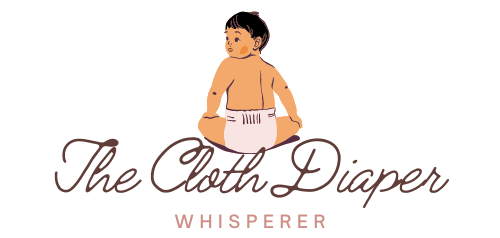Cloth diapers and training pants are common alternatives to traditional diapers. You may also opt for a DIY cloth diaper if needed.
Navigating the plethora of options for baby care, particularly when it comes to diapering, can be a daunting task for new and experienced parents alike. With concerns ranging from environmental impact to skin sensitivity and cost efficiency, finding a substitute for standard disposable diapers is often high on a parent’s list.
Whether due to emergency, personal preference, or a pivot towards a more eco-friendly lifestyle, understanding the alternatives can be crucial. Cloth diapers, a timeless choice, offer a reusable, washable solution, while training pants can serve as an effective interim for toddlers gearing up for potty training. For those in a pinch or preferring a custom solution, creating a homemade cloth diaper from available materials might be the way to go. Each option provides a different set of benefits to consider based on individual needs and situations.
Exploring Diaper Alternatives: Smart Swaps!
Parents and caregivers often explore diaper alternatives for reasons such as skin sensitivities, environmental consciousness, or economic factors. Adopting effective substitutes for traditional diapers doesn’t just ease your baby’s discomfort, but it can also lead to considerable savings and reduce environmental impact. Prior to transitioning, it’s essential to consider the child’s age, comfort, and ease of cleaning. Each alternative has its own set of benefits and drawbacks, making it crucial to choose an option that aligns with your lifestyle and the baby’s needs.
Understanding the necessity for diaper alternatives underscores the importance of assessing different materials and designs. Options such as cloth diapers, hybrid diapers, or even DIY solutions serve different purposes and come with varying levels of absorbency and reusability. Thorough research and consultation with experts or experienced parents can aid in the decision-making process, ensuring the substitute guarantees hygiene, practicality, and comfort for the baby.
The Disposables Dilemma
Traditional diapers significantly contribute to environmental degradation, with millions of tons of waste generated each year. These disposables take up to 500 years to decompose, releasing harmful chemicals into soil and water. A stark contrast is presented by alternatives like cloth diapers, which are reusable and eco-friendly.
| Diaper Type | Initial Cost | Maintenance Cost | Total Estimated Savings |
|---|---|---|---|
| Disposable Diapers | $50-$100 (Monthly) | $0 (No maintenance) | N/A |
| Cloth Diapers | $100-$300 (One-time) | $20-$30 (Monthly) | $600-$1200 (By potty training) |
Switching to alternatives such as cloth diapers, not only does one partake in protecting the environment, but also experiences significant cost savings in the long run. The initial investment in cloth diapers quickly offsets the recurring expense of disposables, making it a smart financial decision.
Sustainable Cloth Diapers
Sustainable cloth diapers are a cost-effective and eco-friendly alternative to disposable diapers. To ensure their effectiveness, selecting the right fabric is crucial. Natural fibers such as cotton, bamboo, and hemp are highly absorbent and gentle on the skin. For durability and comfort, a combination of these materials often works best.
Maintaining cloth diapers requires establishing a consistent cleaning and maintenance routine. Regular washing with a gentle, fragrance-free detergent and thorough drying will prolong the lifespan of the diapers and maintain their absorbency. Utilize sunlight for its natural bleaching effect to remove stains and odors.
- Employ double-layering techniques for added security against leaks.
- Ensure a snug fit around the baby’s legs and waist to prevent spillage.
- Opt for adjustable diaper covers to accommodate growth and provide a custom fit.
Creative Homemade Solutions
Creative homemade solutions for diapering can be a lifesaver for parents looking to economize or reduce waste. A popular choice among DIY enthusiasts are homemade cloth diapers. These can be fashioned from a variety of absorbent materials readily available at home such as an old t-shirt, towel, or soft flannel blankets.
For those seeking step-by-step guidance, online DIY cloth diaper tutorials are abundant. They provide instructions on how to cut and sew fabric into a diaper shape, as well as tips on securing the diaper with snaps, velcro, or safety pins.
Another method involves appropriating household items as diapers. These makeshift alternatives include using a t-shirt as a wrap-around diaper or cutting absorbent adult t-shirts into diaper inserts for waterproof covers.
Ensuring safety precautions for homemade diapering is critical. Always select materials that are clean, highly absorbent, and free of any harsh chemicals. It’s also essential to ensure that the homemade diaper fits snugly but comfortably around the baby to prevent leaks and potential skin irritation.
Modern Reusable Diaper Systems
Exploring modern reusable diaper systems, parents have multiple choices. Two popular options are: All-in-one (AIO) diapers and pocket diaper systems. AIO diapers offer convenience with absorbent layers attached, eliminating the need for separate insertions. Conversely, pocket diapers feature a customizable absorbent insert that can be removed or doubled up for extra protection, tucked into a special pocket within the diaper.
Each system has its own set of benefits. AIO diapers are straightforward, making them a favorite for caregivers who prefer simplicity. Their one-piece design simplifies the changing process—there are no extra pieces to worry about. Meanwhile, pocket diaper systems afford flexibility, with variable absorbency levels to suit different situations or overnight use.
A third option, inserted liners and pre-fold diapers, provide an economical and versatile choice. These flat diapers can be folded in various ways and can be easily replaced while reusing the outer cover. Users should compare the ease of use, customization options, and initial investment required for each type to determine which system best fits their lifestyle and diapering needs.
/cloudfront-us-east-2.images.arcpublishing.com/reuters/FXS4LXHIKVL4JJBHOTXA6QUOVU.jpg)
Credit: www.reuters.com
Transitioning With Training Pants
Transitioning away from diapers signifies a major milestone for toddlers. Opting for training pants can be an effective strategy. It’s time to consider these when your child shows readiness for potty training and can communicate effectively. Consistency in their bathroom routines is another key indicator that they are prepared for this shift.
Training pants come in various designs, each boasting distinct features to suit individual needs. Some offer high absorbency levels similar to diapers, guiding the transition without the mess. Others highlight their reusability and environmental friendliness, being washable and thus, more economical over time. To select the best option, consider your child’s comfort, the ease of pulling up and down, and the material’s breathability.
Biodegradable Disposable Options
Biodegradable diapers offer a sustainable alternative to traditional disposable diapers. Crafted from materials like bamboo, cotton, and cornstarch, these diapers are designed to break down more quickly in the environment. They often contain fewer chemicals, reducing potential irritation for babies with sensitive skin.
| Pros of Compostable Diapers | Cons of Compostable Diapers |
|---|---|
|
|
Parents must ensure proper disposal to reap the full benefits of compostable diapers. These products represent a positive step towards reducing landfill waste and promoting a healthier planet for future generations.
Emergency Diaper Substitutes
Finding yourself without diapers can be a stressful situation, especially with a baby at home. Nevertheless, a few clever solutions can serve as temporary swaps during such emergencies. One can use a clean dish towel, an old t-shirt, or a cotton cloth as a makeshift diaper. Ensure that the makeshift diaper is securely fastened and offers enough absorbency. If necessary, multiple layers should be used to increase absorbency.
Additionally, it’s important to change these emergency diaper substitutes frequently to prevent any skin irritation or rash. For added protection, fashioning a waterproof layer using a plastic bag or shower cap over the cloth can prevent leaks. Always monitor closely for any signs of discomfort or chafing, and keep the baby clean and dry to the best of your abilities until regular diapers are available again.
Accessorizing Your Diaper Alternatives
Diaper covers serve as an excellent barrier, adding a layer of protection when utilizing diaper alternatives. These covers typically come in a variety of materials, such as PUL (polyurethane laminate), wool, or fleece, known for their water-resistant properties. They offer the benefits of reusability and are available in many fashionable designs.
Ensuring diaper alternatives stay securely in place is paramount. It is critical to choose options that feature adjustable fastenings such as snaps or Velcro. Employing a snug-fitting waistband or even safety pins can also be instrumental for those opting for prefolds or cloth diapers. Maintaining the correct size and fit is essential to prevent leaks and guarantee comfort for the baby.
Integrating high-absorbency liners can bolster the efficacy of your chosen alternative, effectively capturing moisture and preventing spills. Always keep an eye on the material’s breathability to ensure the baby’s skin remains dry and free from irritation.
Incorporating Smart Swaps Into Daily Routines
Smart swaps can seamlessly integrate into daily routines, offering a sustainable alternative to traditional diapering. Parents may designate specific times of day for these alternatives, aligning them with the child’s natural patterns. Consistency is key, as it helps both the parent and child adjust to new habits.
When venturing out, traveling with alternative diapering solutions requires a bit more preparation. Parents should consider packing a portable changing mat, extra clothing, and sufficient clean-up supplies. Utilizing highly-absorbent materials and leak-proof coverings can minimize potential mishaps while on the move.
| Time of Day | Alternative Solution | Items to Prepare |
|---|---|---|
| Morning Routine | Cotton nappies | Waterproof cover, Wet bag |
| Afternoon Outings | Biodegradable inserts | Disposable bags, Extra inserts |
| Nighttime Sleep | Wool diaper covers | Extra bedding, Nighttime covers |
Frequently Asked Questions Of What Can I Use Instead Of A Diaper
What Are Eco-friendly Diaper Alternatives?
Cloth diapers are an eco-friendly alternative to traditional disposables. They’re reusable, washable, and come in various styles and materials. Using cloth diapers significantly reduces waste and can be cost-effective over time.
Can I Use Diy Cloth Diapers At Home?
Yes, homemade cloth diapers can be made using old T-shirts, towels, or soft fabrics. They should be folded into a diaper shape and secured with safety pins or a diaper cover. This DIY method is economical and reduces waste.
What Are Some Disposable Diaper Substitutes?
Biodegradable diapers are a disposable option that is more environmentally friendly. They break down faster in landfills compared to regular diapers. Other alternatives include hybrid diapers with a washable outer shell and disposable, compostable inserts.
How Do I Choose The Right Cloth Diaper?
Choosing the right cloth diaper involves considering the type (prefolds, pockets, or all-in-ones), material (cotton, bamboo, or hemp), and the size that fits your baby comfortably. Also, consider the ease of use and cleaning preferences.
Conclusion
In exploring alternatives to traditional diapers, creativity is key. Whether you opt for cloth diapers, hybrid solutions, training pants, or DIY options, each choice supports sustainability and cost savings. Embrace these eco-friendly swaps and give the planet, and your wallet, a breather.
Always consider comfort and convenience for your little one as you make the switch.

Dr. Leah Alexander, M.D., is a board-certified Pediatrician in New Jersey and has been working at Elizabeth Pediatric Group of New Jersey since 2000. Since 2005, Dr. Alexander has worked as an independently contracted pediatrician with Medical Doctors Associates at Pediatricare Associates of New Jersey.
She also has a passion for culinary arts that extends beyond the medical realm. After completing culinary school at the French Culinary Institute, she started Global Palate, LLC, a catering firm, in 2007. She ran her own catering company for six years and served small group parties as an owner and executive chef.
